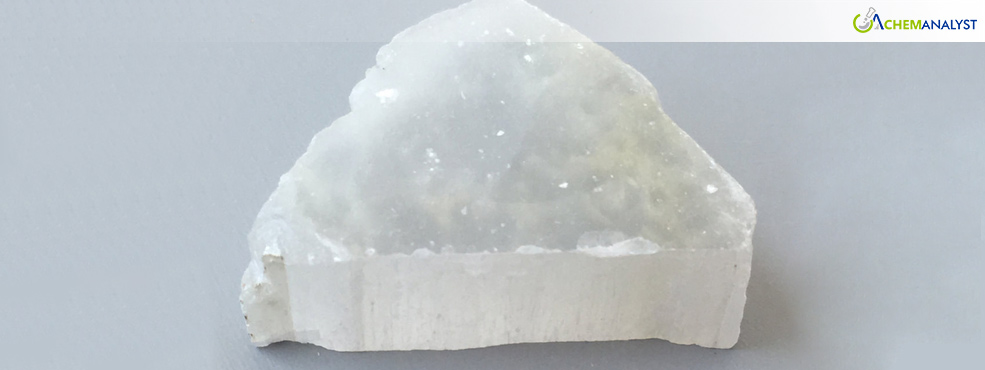Welcome To ChemAnalyst

Ulexite prices in the U.S. faced downward pressure in May, weighed down by soft demand and elevated inventories. Meanwhile, key developments in supply dynamics and shifting regulatory landscapes in North America are shaping the market outlook.
Key takeaways:
Ulexite prices in the USA fell by 1.8% in May. This drop was due to ample market inventory and weak demand from industries that use it. The uncertain tariff situation has really hit Ulexite suppliers, as customers chose to use up their existing stock instead of buying more.
A major development for Ulexite supply comes from Ioneer's Rhyolite Ridge lithium-boron project in Nevada, where ore reserves have quadrupled. This expansion will yield 60,400 tonnes of boric acid annually, enhancing future supply for industries including construction, agriculture, and pharmaceuticals. While the broader mining sector, including Ulexite, saw a small dip in how much it's producing, it's still doing very well at 90.2% capacity. This figure is comfortably above its long-term average.
The Ulexite market saw fewer new orders recently. In May, US demand for boric acid, a key derivative, was mixed, influenced by global growth but fluctuating North American construction activity and cement production. Supply chain issues and seasonal slowdowns added to this volatility.
Ulexite demand in agriculture was stable, though purchases were made for immediate needs, not inventory. Good weather aside, potential plant delays or crop damage from excessive moisture could decrease overall demand.
In key importing market Canada, Ulexite demand has been falling since late March. This downturn is a direct reaction to the Canadian government's proposal to classify boric acid and its precursors as toxic under CEPA, pending public comment results. Additionally, in the downstream construction sector, ulexite demand has been low as the sector is facing volatility driven by the labor market and economic challenges.
Similarly, key importer Taiwan faced weakened demand caused by consecutive months of contraction for Ulexite imports. Companies responded to fewer new orders and anticipated lower production by cutting input purchases, which in turn led to reduced selling prices and lower export volumes from the USA.
Looking ahead, Ulexite prices in the USA are expected to rebound in the short term as demand arises from the agricultural and construction sectors.
We use cookies to deliver the best possible experience on our website. To learn more, visit our Privacy Policy. By continuing to use this site or by closing this box, you consent to our use of cookies. More info.
